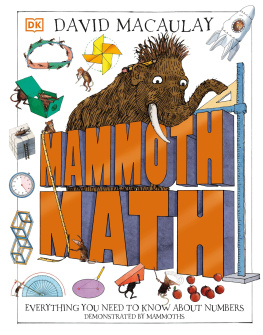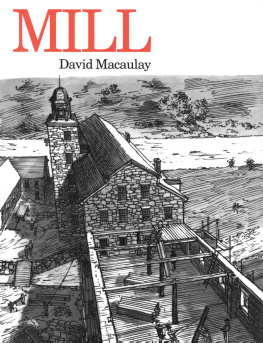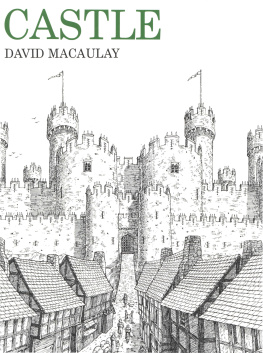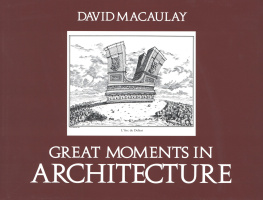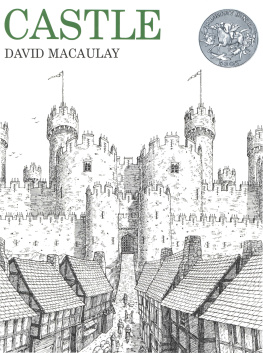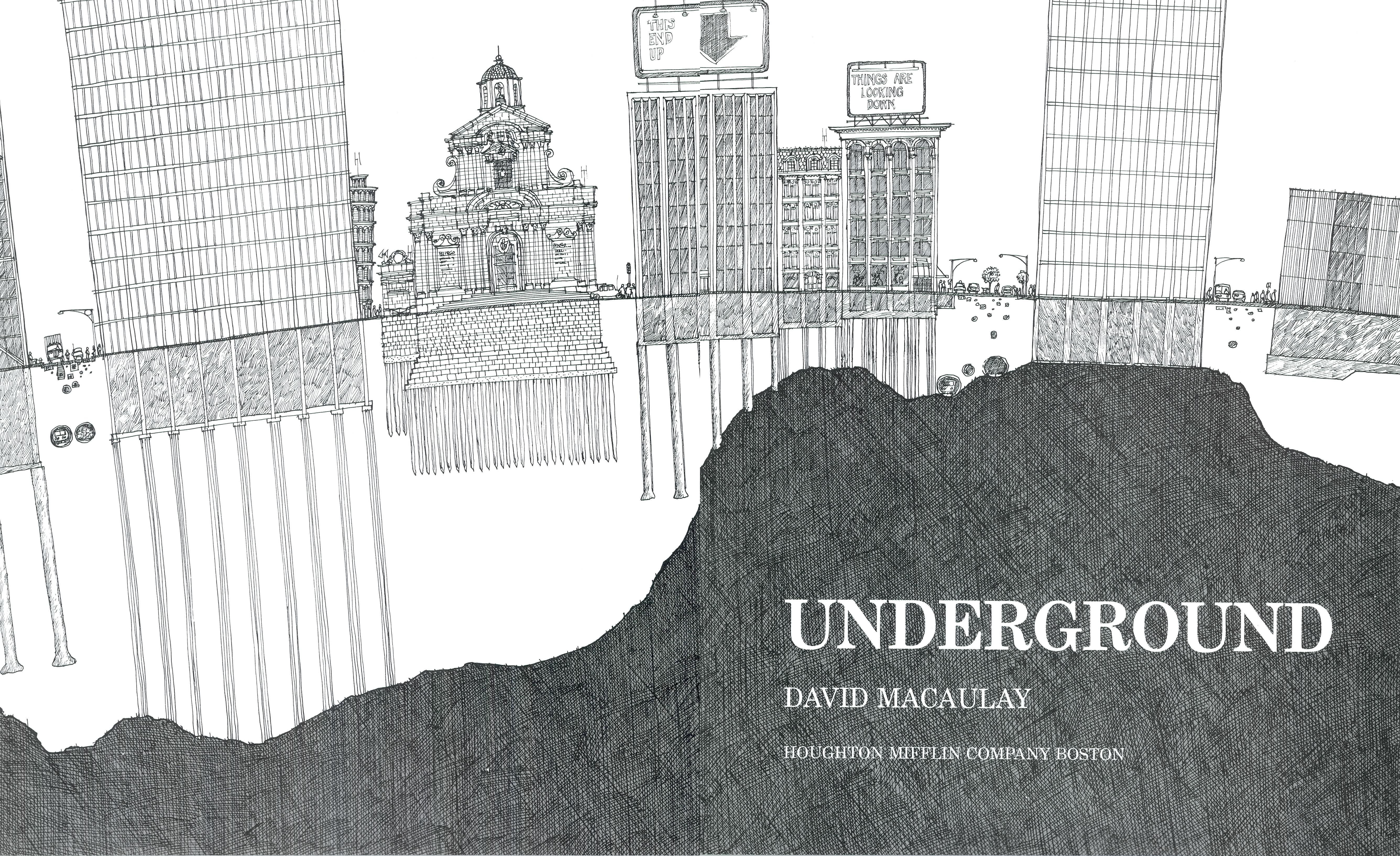
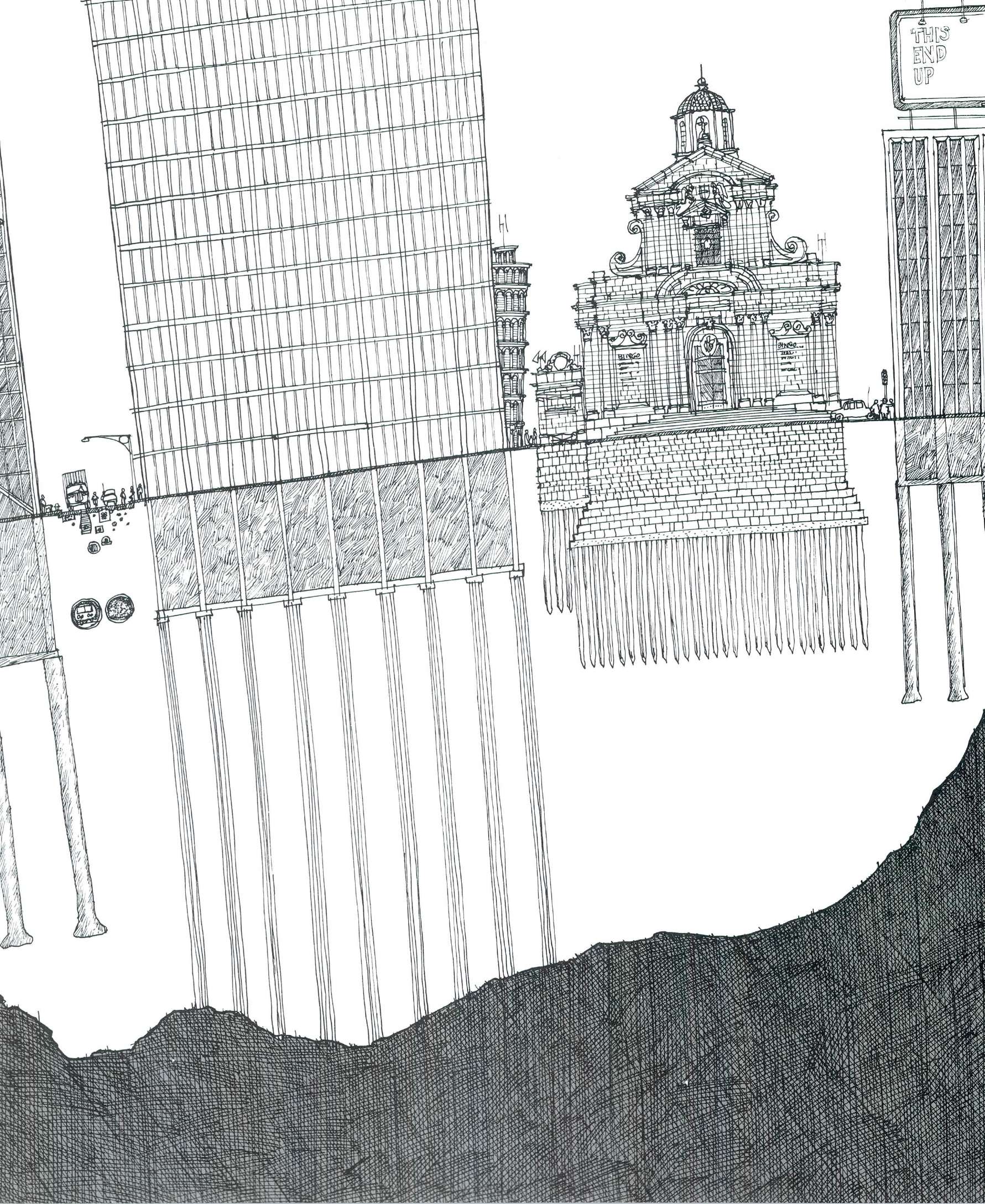
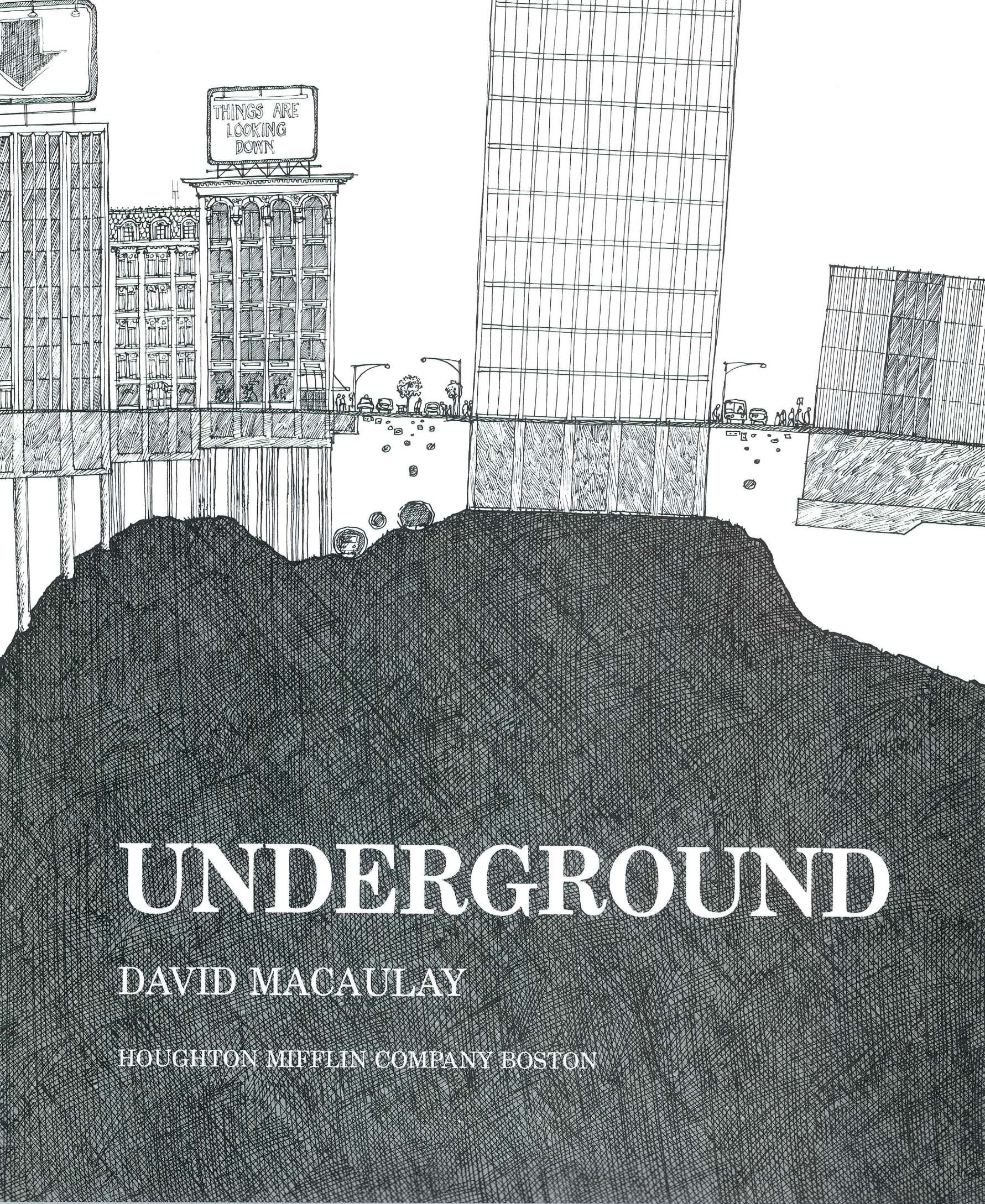
UNDERGROUND
DAVID MACAULAY
HOUGHTON MIFFLIN COMPANY BOSTON
For ELIZABETH the saboteur
and JANICE the defender.
Also Available in Sandpiper Paperbound Editions
CATHEDRAL: The Story of Its Construction
CASTLE
PYRAMID
For time, information, encouragement, and sometimes all three, very special thanks in order of appearance to Larry Walsh, Bev Chaney, and Frank Dyckman in New York; John J. Doherty, Frank P. Bruno, Alan Gass, Clement Titcomb, Ben Kilgore, Tom Walsh, Tom Joyce, John Sullivan, James E. Wagner, George M. Pease, Frank J. McPartlan, Melanie and Walter in Boston; Lorraine Shemesh, Tom Sgouros, Bill Drew, and Wilbur Yoder in Providence; and Ruth Crossley-Holland somewhere on the Victoria line.
Library of Congress Cataloging in Publication Data
Macaulay, David.
Underground.
SUMMARY: Text and drawings describe the subways, sewers, building foundations, telephone and power systems, columns, cables, pipes, tunnels, and other underground elements of a large modern city.
1. Underground utility lines--Juvenile literature. 2. Underground construction--Juvenile literature. [1. Underground utility lines. 2. Underground construction. 3. City and town life] I. Title.
TD 159.3.M3 624'.19 76-13868
ISBN 0-395-24739- X
Copyright 1976 by David Macaulay
All rights reserved. For information about permission
to reproduce selections from this book, write to
Permissions, Houghton Mifflin Company, 215 Park Avenue
South, New York, New York 10003.
Printed in Singapore
TWP 30 29 28 27 26 25 24 23
ISBN 0-395-24739-X Reinforced Edition
ISBN 0-395-34065-9 Sandpiper Paperbound Edition
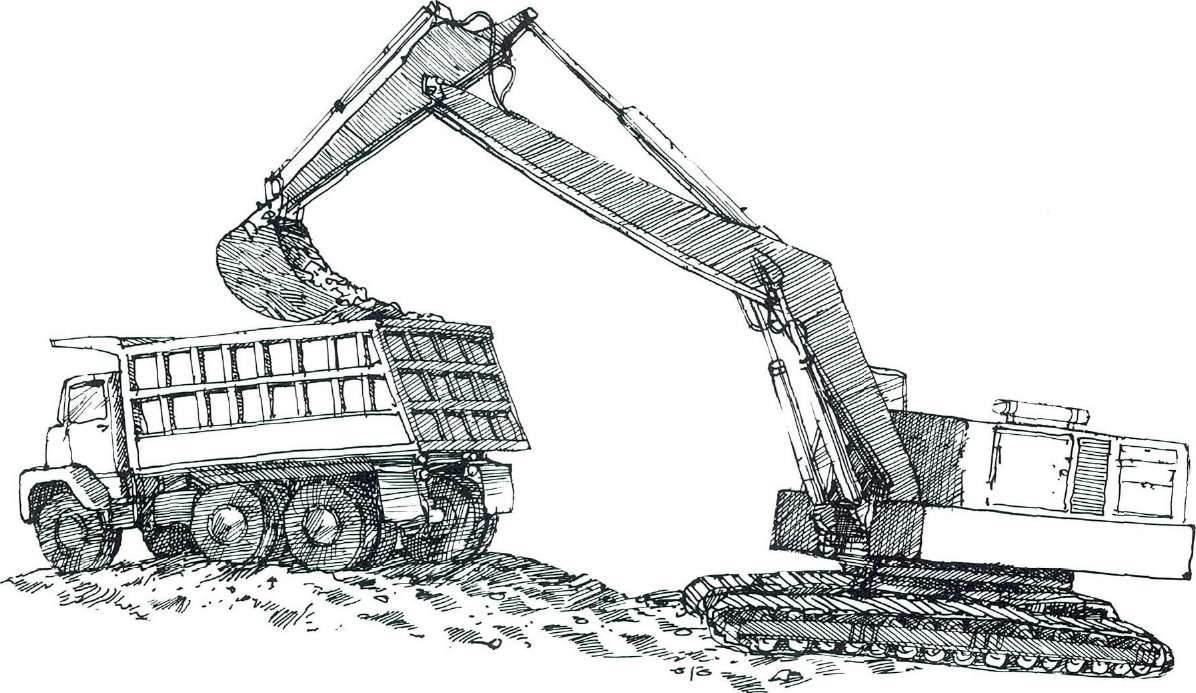
Beneath the buildings and streets of a modern city exists the network of walls, columns, cables, pipes, and tunnels required to satisfy the basic needs of its inhabitants. The larger the city, the more intricate this network becomes. While the walls and columns support the city's buildings, bridges, and towers, the cables, pipes, and tunnels carry life-sustaining elements such as water, electricity, and gas. Larger tunnels burrow through the underground, linking places on the congested surface more directly. Through them high-speed trains carry the large numbers of people who live and work within the urban community.
Since this massive root system is rarely seen, even in part, its complexity is difficult to imagine and its efficiency hardly ever realized. Not until the subway breaks down or a water main bursts do we begin to feel the extent of our dependence on this vast hidden network.
The primary purpose of this book is to expose a typical section of that network and to explain how it works. In order to limit myself to the more essential systems in the underground, I have invented a site at the intersection of two streets. Although the information is accurate, the step-by-step way in which it is presented is somewhat idealistic. In most cities, especially those that have grown gradually over many years, the various functions are all happening at the same time and often in the same place.
By better understanding the things we can't see in a familiar environment such as the city, we can learn to appreciate the array of unseen structures and systems, both manmade and natural, which surround us wherever we go. These amazing and often indispensable systems work so well and so quietly that we tend to be unaware of their existence.
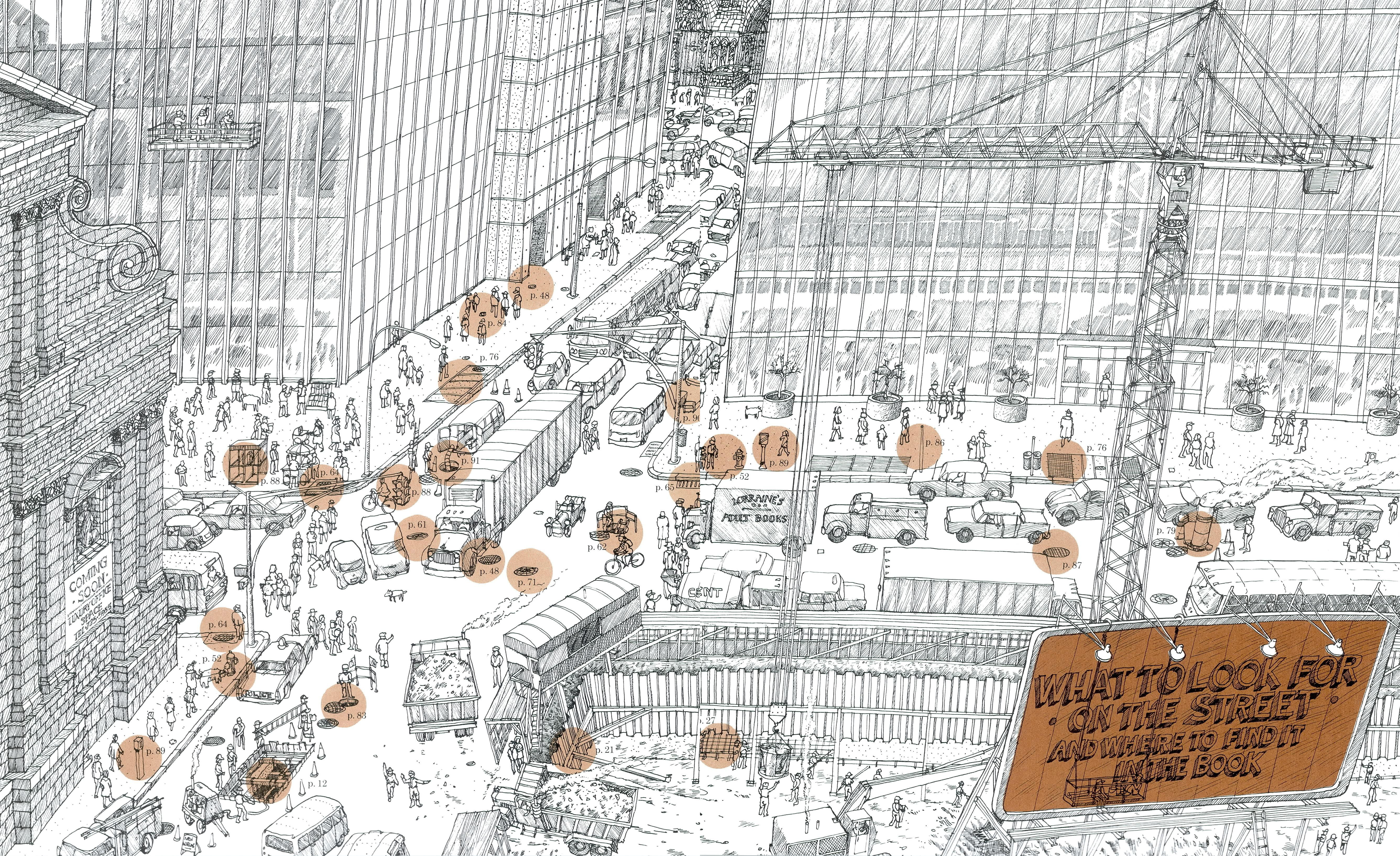
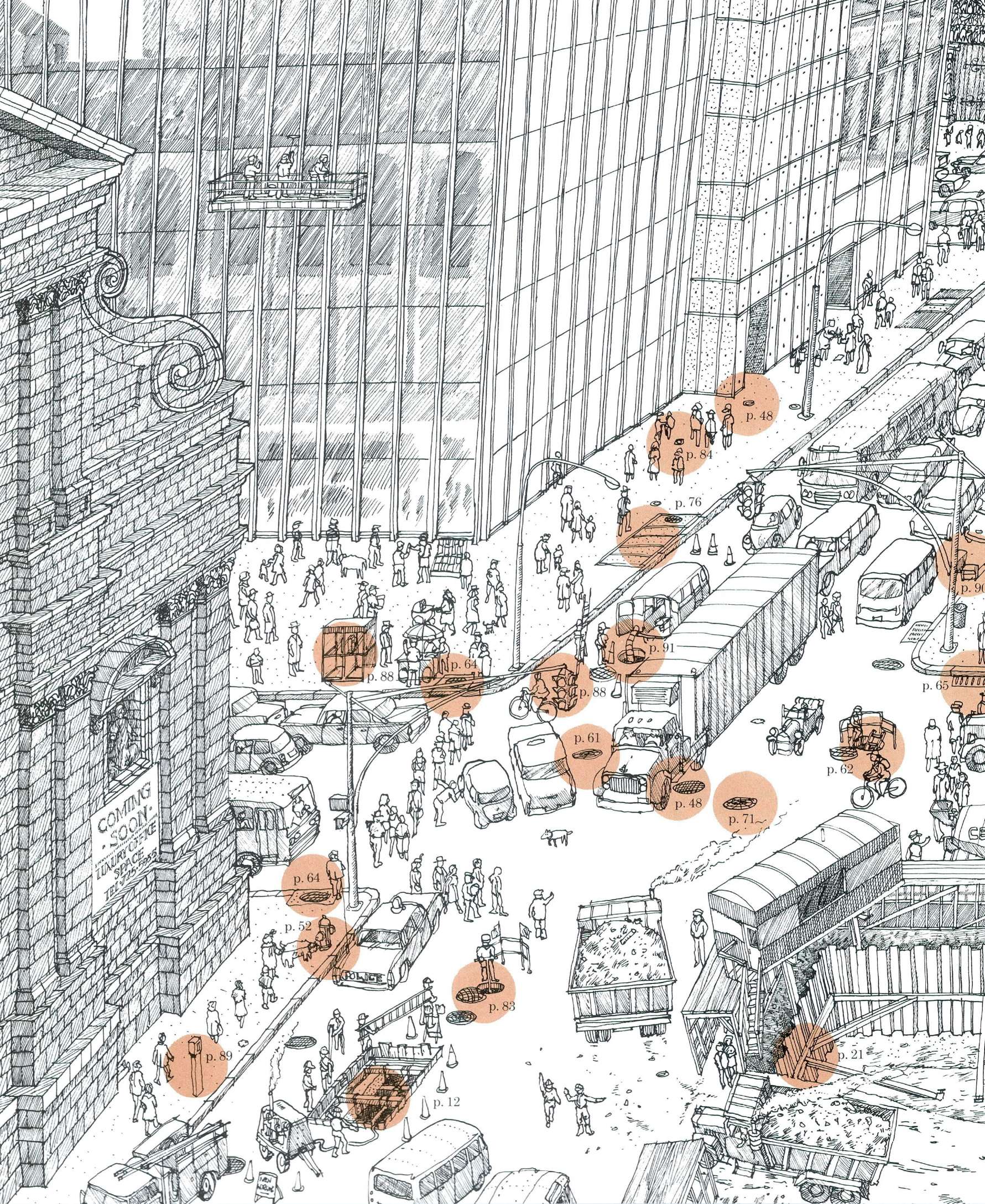
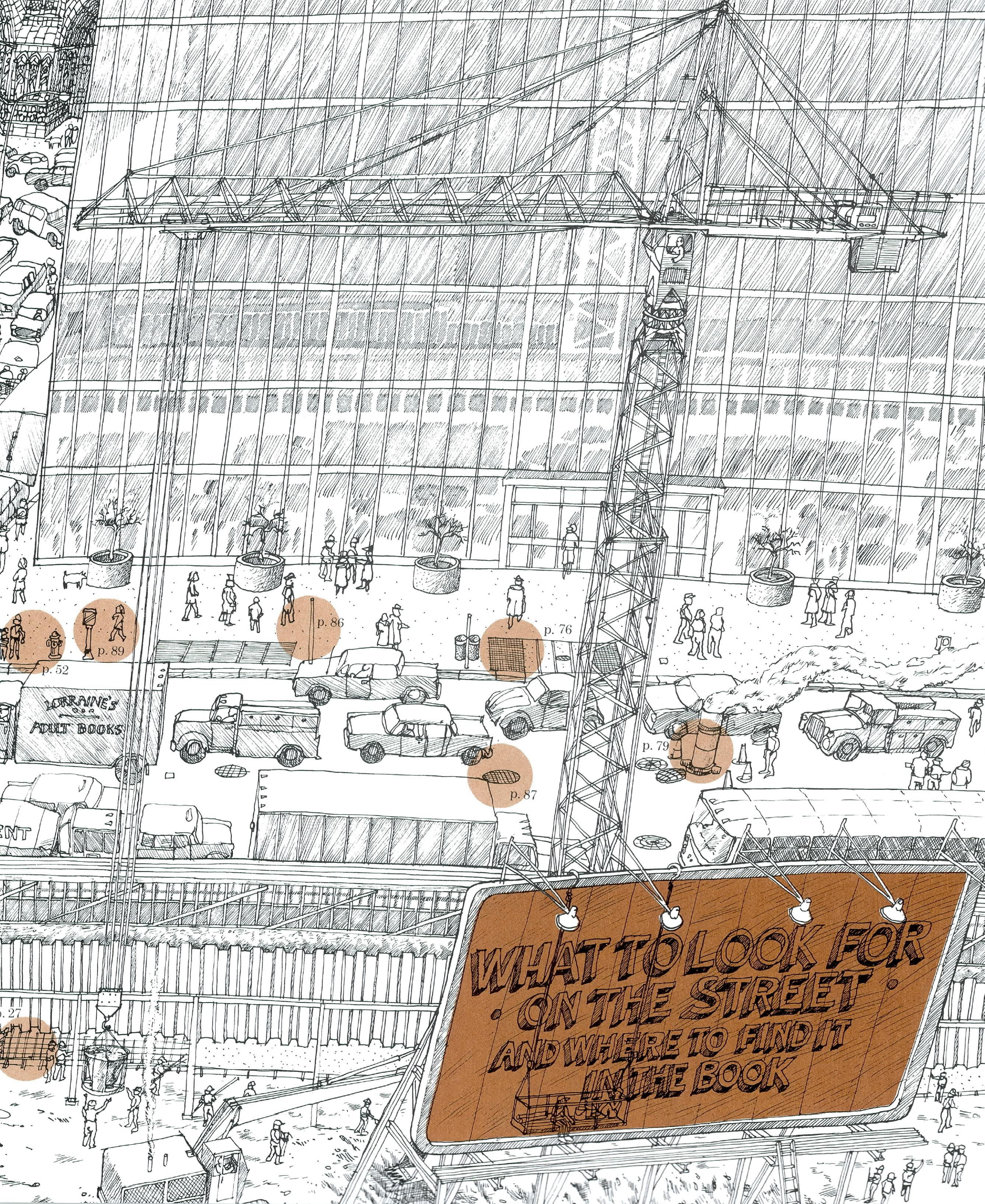
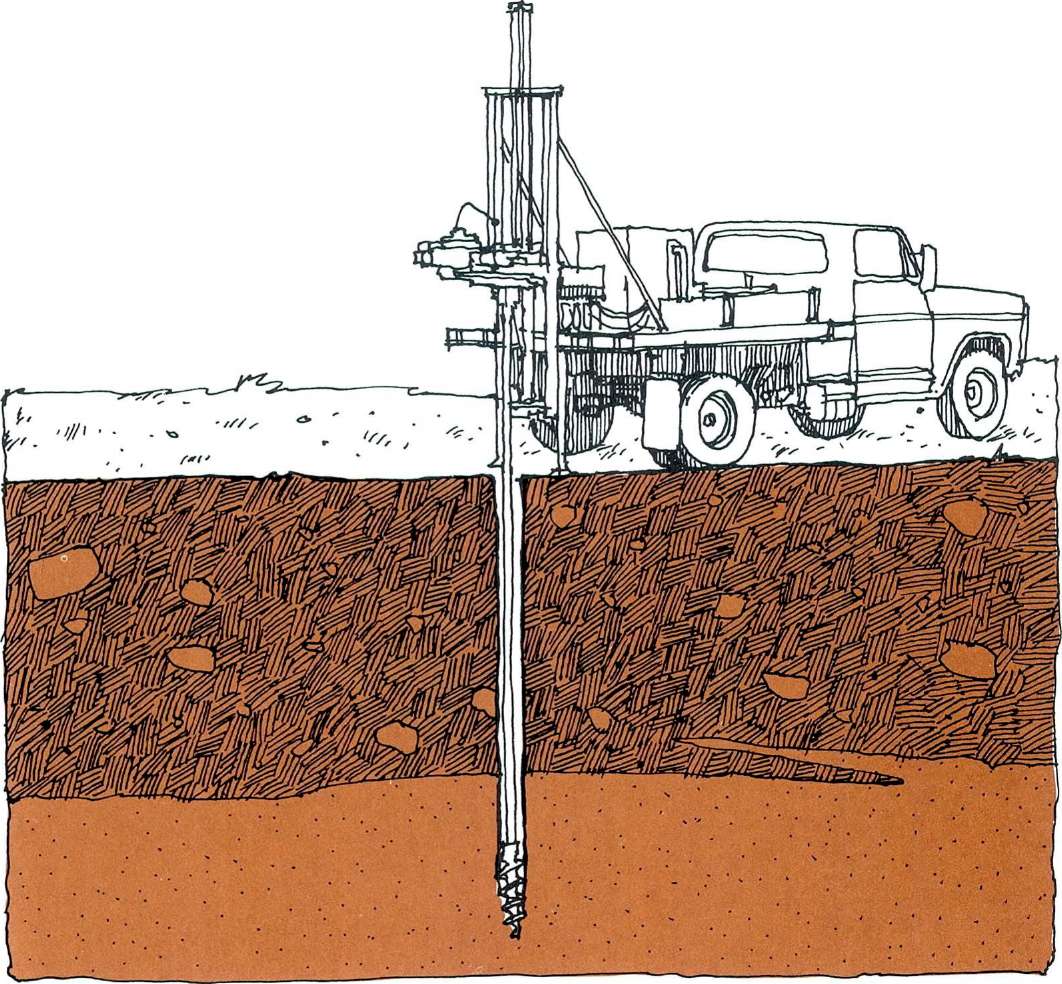
Most buildings are constructed on that part of the earth's surface that is composed of layers of material including sand, clay, miscellaneous rock, and water. Below them, often hundreds of feet, lies the solid crust of the earth called bedrock. Before a building can be completely designed, the architect must know the exact composition of the ground on which it will stand. This can be determined in several ways.
The simplest method is to dig a hole and look. But this only works if the hole doesn't have to be too deep. A second method uses an instrument called a sounding rod, which indicates the distance to bedrock. The best method involves using a variety of techniques for removing samples of soil and rock from various depths and examining them first hand.
No matter which method is used, all the tests are made at predetermined points marked on a plan of the site. The results are recorded on a vertical cross-section drawing that produces a picture of the site called a soil profile. It shows not only the kinds and depths of different layers but also the height of the water table. This is the distance below the surface at which the soil is completely saturated with water.
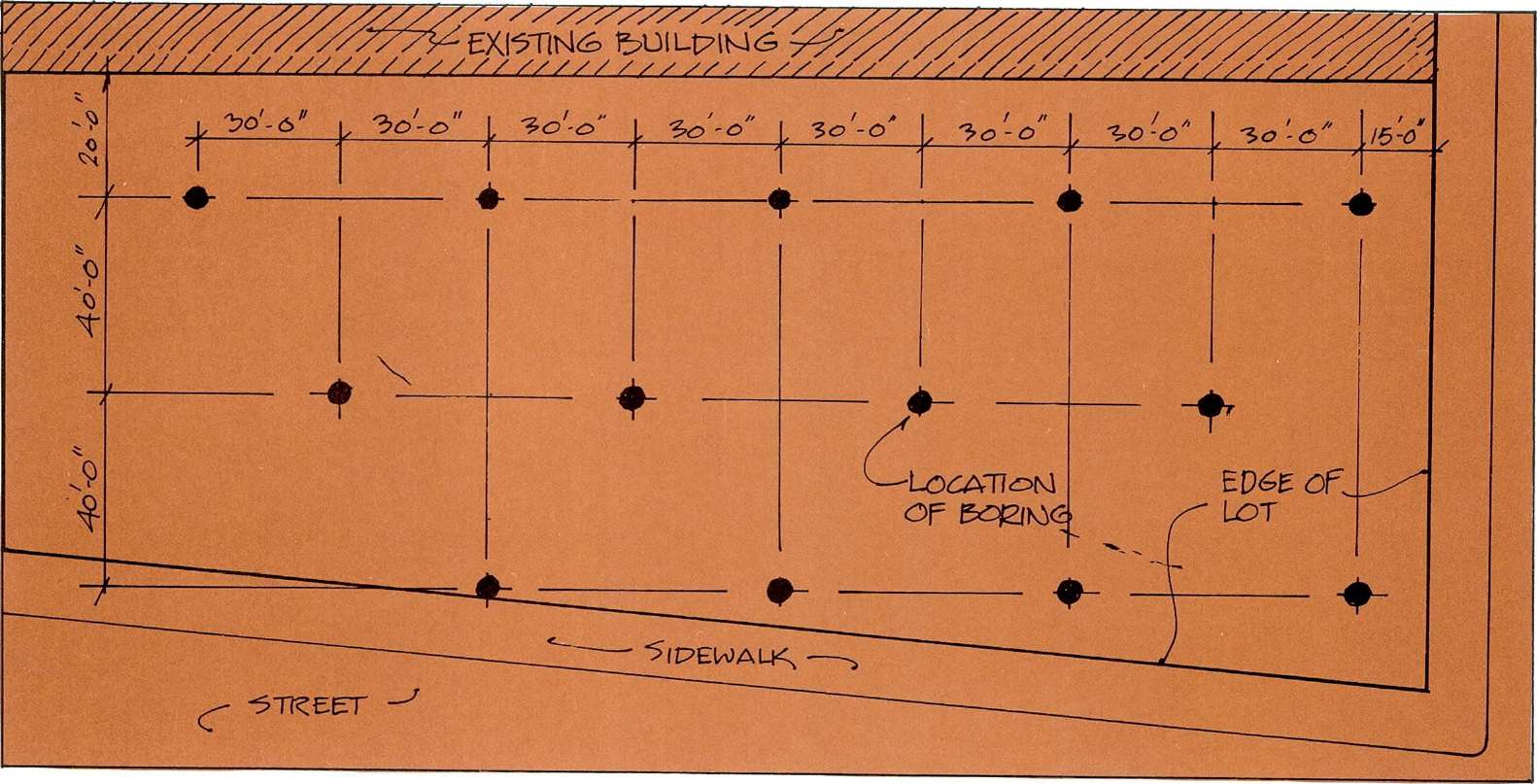
SITE PLAN
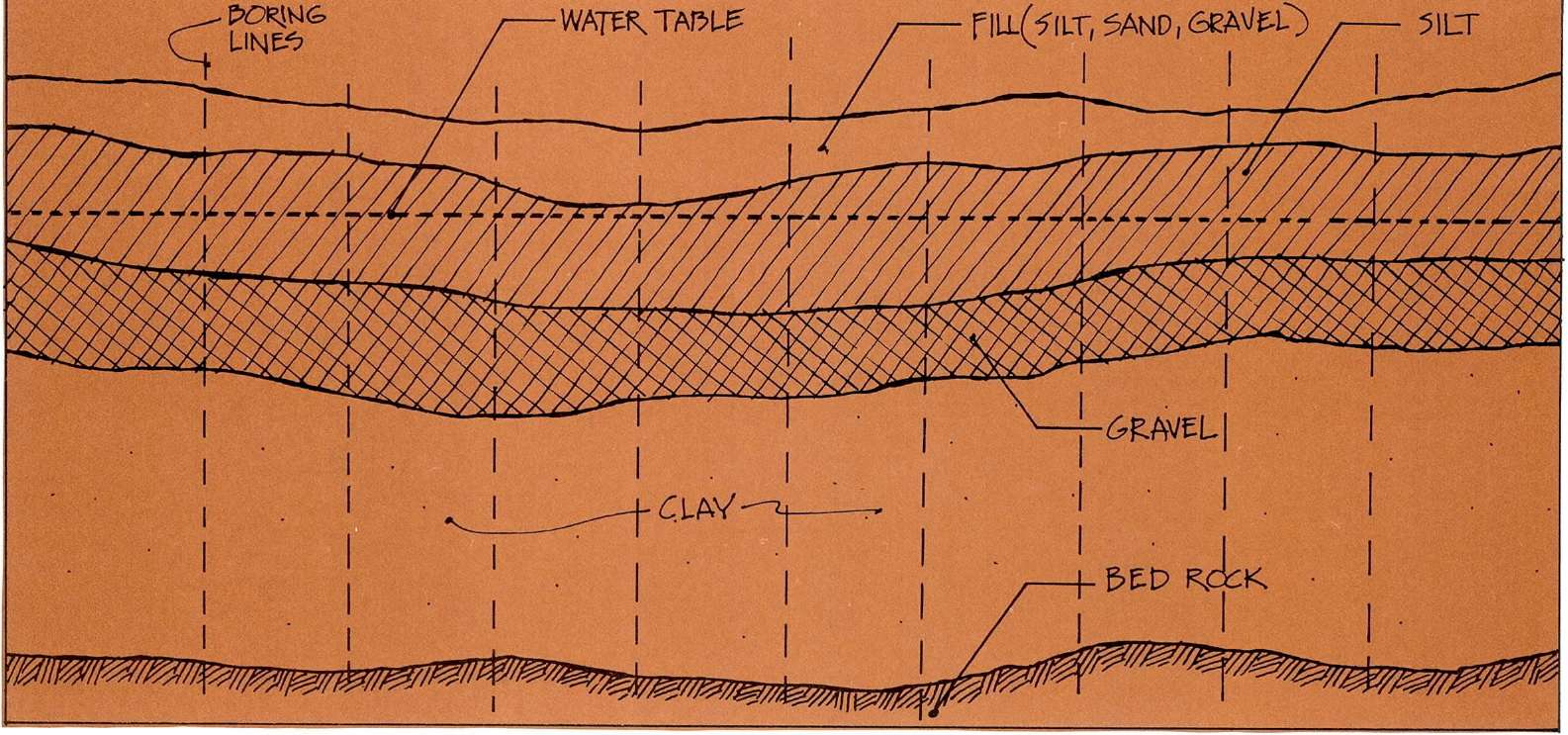
SOIL PROFILE
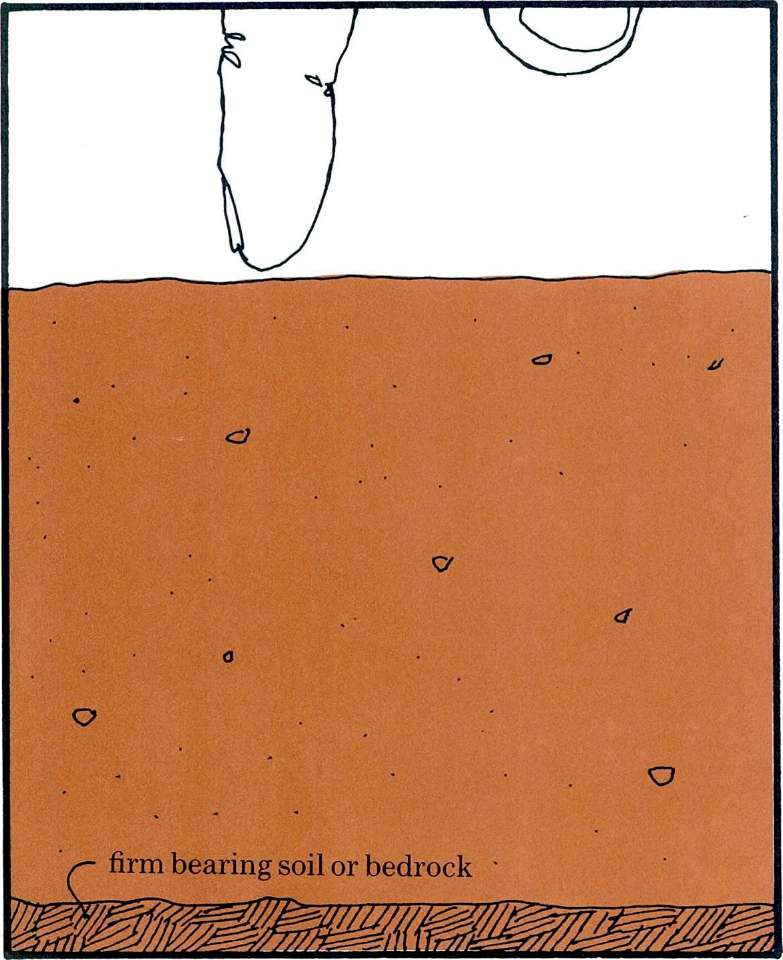
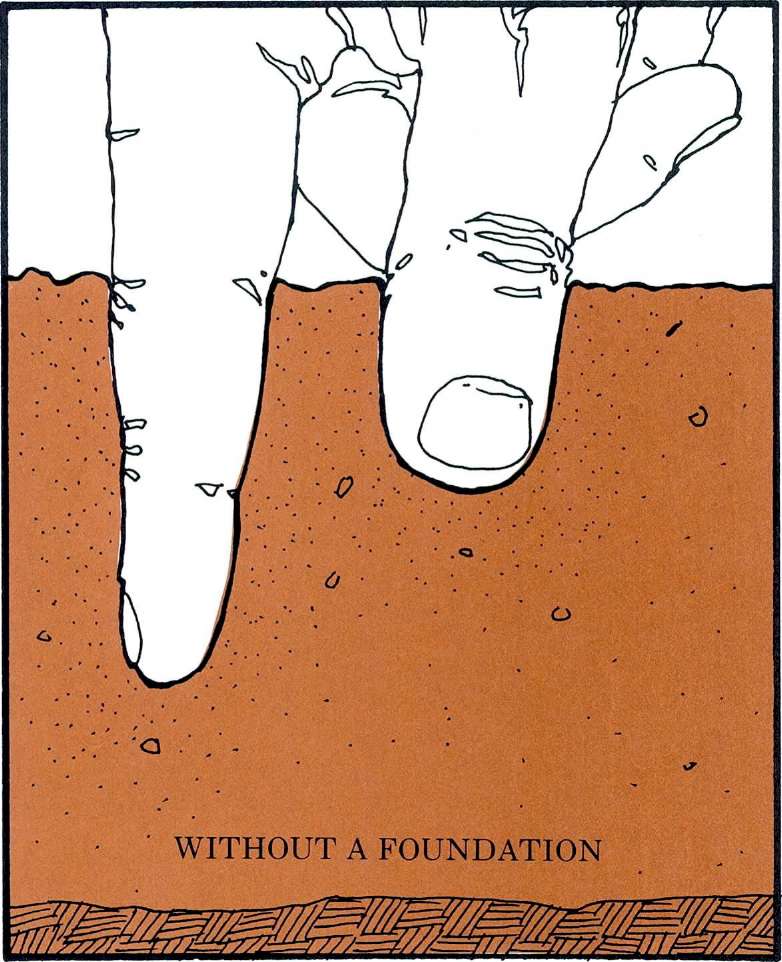
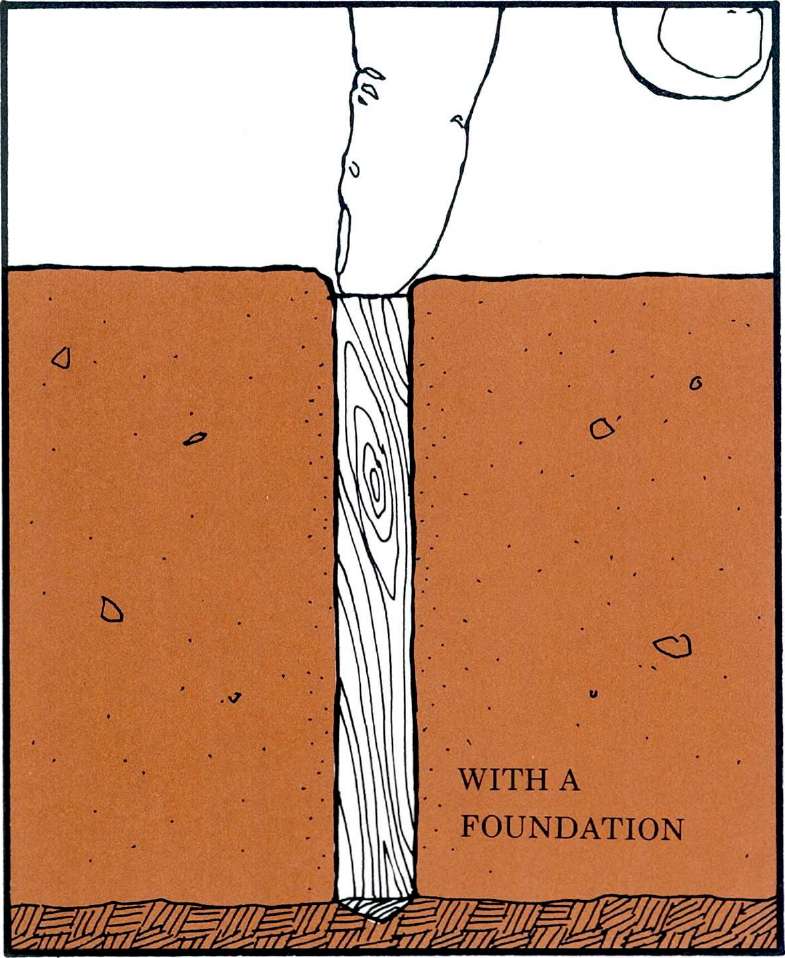
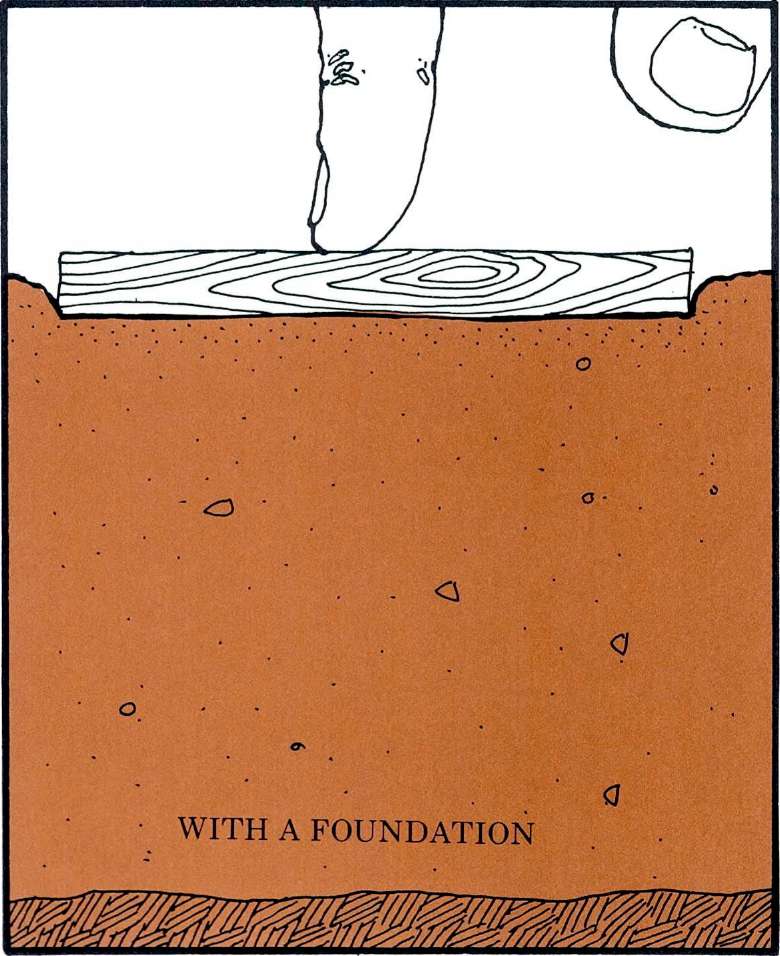
Bedrock is the best material on which to build. However, when bedrock is too far below the surface, foundations must be constructed that will either reach it or will enable the building to stand without reaching it. A foundation is the structure built to transfer the weight of a building to the material below. Since all buildings move or settle somewhat during and after construction, the foundation must also provide for uniform settlement. If one part of a structure moves more quickly or in a different direction than another part, serious weakening can occur. This aspect of foundation design is especially important when the ground below a building is unstable.
The best foundation for a particular building is determined by the weight of the building, the area over which that weight is to be distributed, and the soil conditions. The type of foundation used for most small buildings is called a spread foundation. It involves placing a flat concrete slab called a footing under each column or foundation wall. A footing simply spreads the weight placed on it over a greater area, thus increasing the resistance of the soil to the pressure.
Next page

